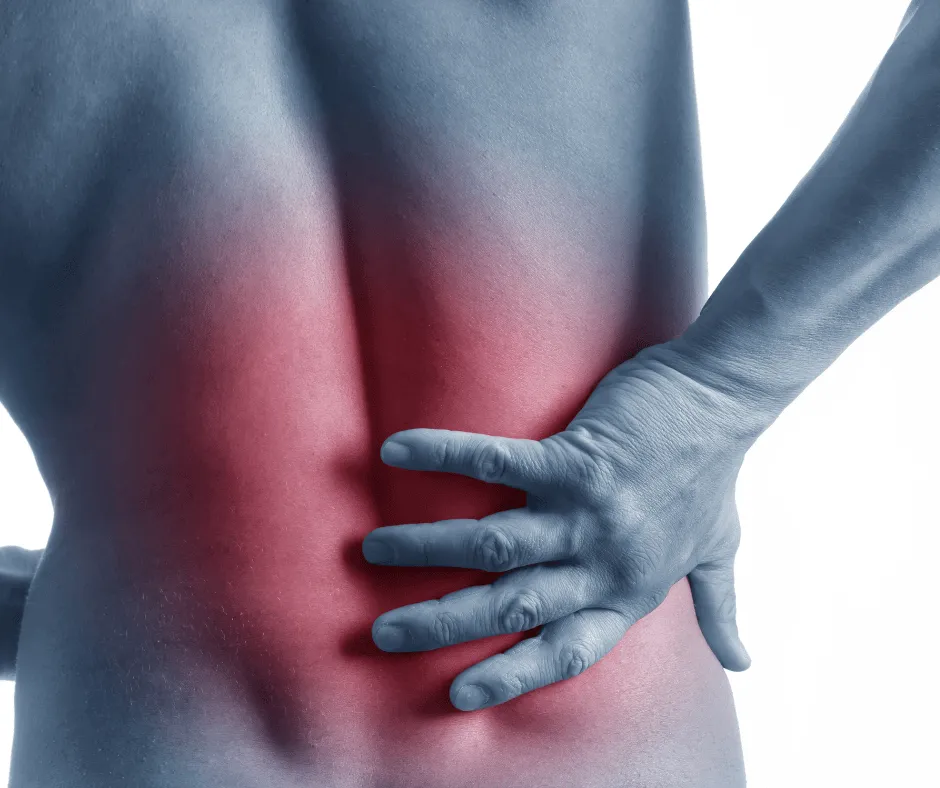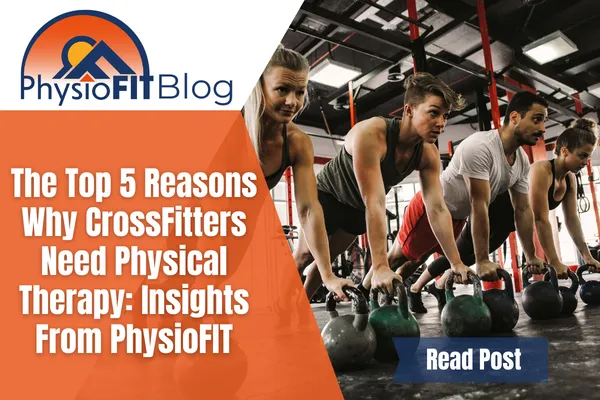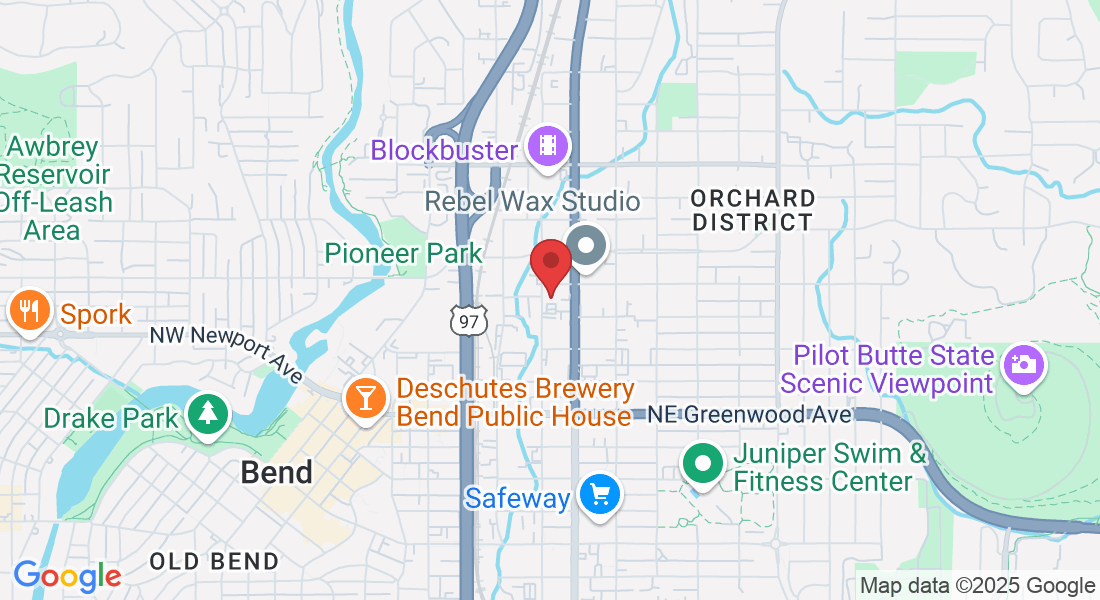Back Pain Relief
Reclaim Your Life, Free from Back Pain
Welcome to your journey towards freedom from back pain. One of the prevalent health issues in the United States is back pain, manifesting itself in various forms ranging from a persistent, mild ache to an abrupt, acute pain that might radiate down your leg. Back pain can be triggered by sudden incidents like accidents, falls, or lifting heavy objects, but it can also gradually develop due to age-induced changes in the spine. Sometimes, medical conditions such as inflammatory arthritis disorders are the culprits behind this pain.
Understanding the intricacy of back pain and its myriad causes, we at PhysioFit advocate for a multi-pronged approach to treatment. With each patient's unique path to relief in mind, we use evidence-based, fitness-centered physical therapy to offer personalized care. Our commitment is not only to alleviate your back discomfort but also to help you adopt measures that enhance your overall well being, thereby reducing the risk of chronic or prolonged pain, and enabling a swift return to your daily activities.
What You Should Know
Acute Back Pain: This is a sudden onset of discomfort that usually lasts from a few days up to a few weeks. Acute back pain is often the result of an accident or sudden physical strain.
Subacute Back Pain: This form of back pain can either come on abruptly or develop gradually over time, typically lasting from 4 to 12 weeks. It may be caused by an injury or overuse of the back muscles.
Chronic Back Pain: Characterized by discomfort lasting more than 12 weeks and occurring daily, chronic back pain may manifest quickly or slowly. It's often associated with degenerative conditions, such as arthritis or disc disease.
A proper diagnosis of a back problem involves a thorough evaluation from a professional.

The Most Common Causes of Back Pain
Back pain can emanate from a diverse array of factors, often intertwining and collectively leading to chronic lower back pain. These factors span mechanical or structural issues with the spine, inflammatory conditions, and other medical disorders. In some instances, it may even be challenging to pinpoint a definite cause for the onset of back discomfort.
Back pain may arise due to mechanical or structural irregularities within the spine, discs, muscles, ligaments, or tendons in the back, or due to nerve compression.
Sprains: These injuries affect the ligaments that provide support to the spine, connecting various bones together. Sprains often occur due to improper twisting or lifting.
Strains: These refer to injuries to a muscle or tendon, which can lead to significant back pain.
Degenerative disc disease: Aging leads to a gradual breakdown of the discs situated between the vertebrae of the spine. This condition is often associated with other degenerative spinal changes, such as arthritis or spinal stenosis.
Herniated or ruptured discs: These conditions occur when a disc compresses and irritates adjacent nerves, usually at the lumbar level but it can also affect the cervical spine.
Spondylolisthesis: This condition is characterized by a vertebra in the spine slipping out of its place or slowly misaligning.
Fractured vertebrae: Fractures of the spinal bones can be a significant source of back pain.
Scoliosis or other congenital changes to the spine: Birth defects and developmental abnormalities like scoliosis can lead to chronic back discomfort.
Myofascial pain: This condition refers to the tightness and pain in the muscles supporting the spine, which could result from muscle damage or from nerve input to the muscles originating from the spine.
As for inflammatory conditions, they also play a significant role in back pain:
Ankylosing spondylitis: This is a specific type of arthritis that affects the spine, causing stiffness and discomfort.
Other Medical Conditions that can cause back pain:
Osteoporosis, Fibromyalgia, Kidney Issues, Endometriosis, Spinal Infections, Tumors, Pregnancy.
Remember, if you resonate with any of the symptoms or conditions mentioned, we highly recommend making an appointment with us for a thorough evaluation and personalized treatment plan.
Proactive Steps for Back Pain Prevention
It's possible to avoid back pain resulting from excessive use or incorrect body movements. Here are some guidelines to foster a healthy back and promote a wholesome lifestyle:
Regular Exercise for a Strong Back: Engage in consistent exercises that fortify your back muscles. Balance-enhancing and strength-boosting activities, like yoga or tai chi, reduce the risk of falls, subsequent back injuries, and bone fractures. Always remember to warm up before any physical activity.
Nutrient-Rich Diet for a Robust Spine: Adopt a healthy diet packed with ample amounts of calcium and vitamin D, the essential nutrients for maintaining spinal strength.
Maintain a Healthy Weight for Stress Reduction: Keep your weight in check. Excess weight can exert unnecessary and harmful stress on your back.
Good Posture for Back Support: Embrace good posture, refraining from slouching. Ensure your back is well-supported while sitting and standing.
Safe Lifting Techniques for Injury Prevention: Evade lifting heavy objects as much as possible. If you have to, rely on your legs and abdominal muscles, not your back.

Common Symptoms of Back Pain
Escalated discomfort when executing lifting or bending movements.
Intensifying pain during rest periods, sitting stances, or when standing.
Rigidity in the morning upon waking, coupled with diminishing back pain upon engaging in activities.
Pain that travels from the back to other areas such as the buttocks, leg, or hip.
Discomfort in your neck, arm, or back
Recurring episodes of back discomfort.
Remember, if you resonate with any of the symptoms or conditions mentioned, we highly recommend making an appointment with us for a thorough evaluation and personalized treatment plan.
Please Note: The information provided on our website is intended for general education and is not a substitute for professional medical advice. Each individual's situation and body is different. Therefore, what may work for one person may not work for another. We care about your well-being and advise you to reach out to us to discuss your specific needs before implementing any advice from our website.
Your Source for All Things Physical Therapy in Bend Oregon
The PhysioBlog

The Top 5 Reasons Why CrossFitters Need Physical Therapy: Insights From PhysioFIT
PhysioFIT's Perspective: The Essential Role of Physiotherapy for CrossFitters
Please Note: The information provided on our website is intended for general education and is not a substitute for professional medical advice. Each individual's situation and body are different. Therefore, what may work for one person may not work for another. We care about your well-being and advise you to reach out to us to discuss your specific needs before implementing any advice from our website.
Introduction
CrossFit is a high-intensity fitness regimen that has gained popularity worldwide. It incorporates elements from various disciplines, including weightlifting, gymnastics, strongman, and the list goes on. While it's an excellent way to build strength, endurance, and agility, the physical demands of CrossFit , like with any physical activity, can also lead to injuries if not properly managed. This is where physical therapy comes into play. At PhysioFIT, we believe in the importance of physical therapy care in maintaining fitness and preventing injuries, especially for CrossFitters.
The Physical Demands of CrossFit
CrossFit workouts, known as WODs (Workouts of the Day), often involve complex movements that require strength, flexibility, and coordination. These can include everything from Olympic lifts to high skill gymnastic movements. These workouts are intense and often time dosed inappropriately at your local box. According to a study published in the Orthopaedic Journal of Sports Medicine, nearly 20% of CrossFit participants reported experiencing an injury over a 12-month period. While this is often lower than many popular sports in the U.S it remains something we should be paying attention to.
The Role of Physical Therapy in CrossFit
Physical therapy can play a crucial role in helping CrossFitters optimize their performance and prevent any type of fitness or sports-related injuries. AtPhysioFIT, we take a proactive approach to physical therapy. Instead of waiting for an injury to occur, we work with athletes to strengthen their bodies, improve their mobility, and correct any imbalances or poor movement patterns that could lead to injury. This approach, often referred to as preventive physical therapy, can help CrossFitters stay healthy and perform at their best. We believe we are best positioned to help you because we are one of you! We intimately understand not just the intensity of the program but the culture, methodology, and movements involved.

Why CrossFitters Shouldn’t Wait Until They Can’t Workout to See a Physical Therapist
Many athletes, including CrossFitters in Central Oregon, make the mistake of waiting until they're in pain or can't workout before seeking help. However, by the time pain sets in, an injury has often already occurred. Early intervention with physical therapy can help identify potential issues before they become serious problems. Remember, no movement done properly should induce joint pain regularly. If the front of your shoulder hurts every time you do toes to bar or the base of your neck is sore after handstand push ups this is your body telling you something is not moving the way it should. Just because it happens frequently doesn't mean it’s normal.
At PhysioFIT, we believe in catching and addressing these issues early. Our team of physical therapy specialists can assess your movement patterns, identify any areas of weakness or imbalance, and provide you with a personalized treatment plan to address these issues. This proactive approach can help you maintain your fitness, prevent injuries, and keep doing the workouts you love.
The Top 5 Reasons Why CrossFitters Need Physical Therapy in Bend Oregon
Reason 1: Injury Prevention
CrossFit is a high-intensity workout regimen that pushes your body to its limits. While this can lead to impressive fitness results, it can also increase the risk of injuries.
This is where physical therapy comes in. At PhysioFIT, our physical therapists can help CrossFitters understand their bodies better and prevent injuries. We do this by teaching proper form, identifying and addressing movement imbalances, and creating personalized training programs that consider each individual's unique physical capabilities and limitations.
Reason 2: Performance Optimization
Physical therapy isn't just about injury prevention and recovery. It's also about optimizing performance. At PhysioFIT, we understand that every CrossFitter has performance goals, whether it's lifting heavier weights, completing workouts faster, or simply being able to train consistently without pain.
Our physical therapists can help you reach these goals. We do this by enhancing movement efficiency, reducing energy waste, and improving strength and flexibility. With our help, you can push your limits in a safe and effective manner.
Reason 3: Mobility Improvement
Mobility, or the ability to move and control your joints through their full range of motion, is crucial in CrossFit. It allows you to perform exercises correctly, reduces the risk of injuries, and contributes to overall performance.
At PhysioFIT, we offer mobility training as part of our physical therapy services. We teach exercises that improve flexibility, balance, and body control, and we provide hands-on treatment to address any mobility issues you may have.
Reason 4: Recovery Acceleration
CrossFit workouts can be tough on your body. That's why recovery is an essential part of every CrossFitter's routine. Proper recovery reduces muscle soreness, prevents overuse injuries, and ensures that you're ready for your next workout. Remember, recovery is more than a cold plunge.
Physical therapy can speed up recovery. At PhysioFIT, we use techniques like massage, stretching, and targeted exercises to help your body recover from intense workouts. We can also provide limited advice on nutrition, sleep, and other lifestyle factors that affect recovery. In Crossfit, we find training load (often in the form of volume) is the biggest culprit for adverse events that keep you out of the gym. We are always happy to talk with you and help you nail down what training load is appropriate for you and help you increase that capacity (should that be your goal).
Reason 5: Technique Refinement
Proper technique is crucial in CrossFit. It ensures that you're getting the most out of each exercise and reduces the risk of injuries. However, with the wide variety of exercises in CrossFit, it can be challenging to master the technique for each one.
This is another area where our physical therapists can help. At PhysioFIT, our physical therapists are experts in movement analysis. We can observe how you perform different exercises, identify any issues with your technique, and provide feedback and instruction to help you improve. Again, we didn't just learn about these movements in books. We’ve spent years refining our own technique not only because we love it but because we believe to help you we need to truly understand the demands your body is under first hand.

FAQs
What is CrossFit?
By definition CrossFit is high-intensity functional movements executed at high intensity. It mixes almost every training modality to help build the most resilient you possible. It aims to build a body that is prepared for anything life will throw at it.
What CrossFit isn't?
Crossfit is not inherently more risky than other forms of exercise or sport.
Crossfit is constantly varied… not random.
Why might CrossFitters need physical therapy?
CrossFitters may need physical therapy due to the high-intensity and often high volume training seen in many Crossfit boxes, which when not managed appropriately, can lead to injuries. Physical therapy can help in injury prevention, recovery, and improving performance.
What are some common injuries in CrossFit?
Injuries we tend to see in crossfitters are shoulder, knee, and lower back injuries.
What is PhysioFIT?
PhysioFIT is a physical therapy clinic that offers a range of services, including manual therapy, injury prevention, rehabilitation, and performance enhancement, tailored to the needs of each individual. Call and schedule an appointment with us today!
Conclusion
Physical therapy should play a crucial role in the world of CrossFit. It not only aids in the recovery from injuries but also helps in preventing them. By improving mobility, strength, and overall fitness, physical therapy can significantly enhance a CrossFitter's performance.
Moreover, with the high-intensity and high-volume nature of CrossFit, the risk of injury is always present. Therefore, incorporating physical therapy into a CrossFitter's routine is not just a smart choice, but should be a necessary one.
At PhysioFIT, we understand the unique needs and challenges of CrossFitters. Our team of experienced physical therapists is dedicated to helping you stay fit, healthy, and injury-free. So why wait? Make physical therapy a part of your fitness regimen today. Your body will thank you.
Please Note: It's important to note that any exercises that are shared should be performed under the guidance of a qualified physical therapist in bend to ensure correct technique and to prevent injuries. A physical therapist can provide a customized exercise program based on the individual's fitness level, goals, and any existing injuries or conditions. If you’d like to explore this more or would like to schedule a time with a physical therapist, contact us atPhysioFITBend.com
Copyright PhysioFIT 2025 . All rights reserved


